UMS' Marine Aquarium & Musuem (17th June 2011)
So the visit to the uni’s aquarium museum was quite an eye opening for me to the marine in living color. I think I am among the last alien on earth who have never stepped into the museum throughout my 4 years of undergraduate studies here. Although Marine BioValley of UMS does not offer a very spacious area of exhibition, but at least it offers a glimpse of what lies beneath the waves ;).
The atrium welcoming visitors with ‘artificial’ sensation of being beneath the waves.
I didn’t know that we have an humongous skeleton of among the largest mammal, the Cuvier’s Beaked Whale right at our backyard ;) Besides, there was also a steno bredanensis, or dolphin in our layman English. I learnt that ‘steno’ in Greek means narrow, referring to dolphin’s beak. This is a rough-toothed dolphin because of its thin lines of enamel running vertically down their teeth, which made them feel rough. According to the details from the information board, this poor dolphin was found dead a month after she was discovered full with wounds struggling hard to free herself by a group of fishermen in their fishing net in Tuaran.
And also the horseshoe crabs. It was said that there are only 4 living species can be found in the whole world, of which 3 of them can be found in Sabah. The remaining species can only be found in North America and the Gulf of Mexico. We are lucky, aren't we? ;)
The aquarium section was the area I loved the most. All the tiny, colorful, fragile looking creatures were awly beautiful. Among them are the seahorse (Hippocampus kuda). Despite having seen a seahorse for several number of times, only upon this visit, I came to know that female seahorses lay their eggs in a brood pouch on the males before the male fertilizes and incubates the eggs until they hatch. Another wonderful creation of God ;)
As nasty as it may look, this is called crown-of-thorns or Acanthaster Planci. It is categorized under the same group of starfish, and was honored as the largest sea star in the world but they are the most efficient coral predators, contributing to the underwater ecology 'cancer'.
Bottom: Clockwise from top left were among the enormous fish dominating the gigantic aquarium, followed by the oh-so-huge grouper probably the largest fish I have ever seen in my entire life, coral catshark and the bamboo shark.
Various type of soft corals. They might not look as appealing here, but trust me; they are oh-so-beautiful! I cannot resist myself from staring at their almost transparent and colorful feature.







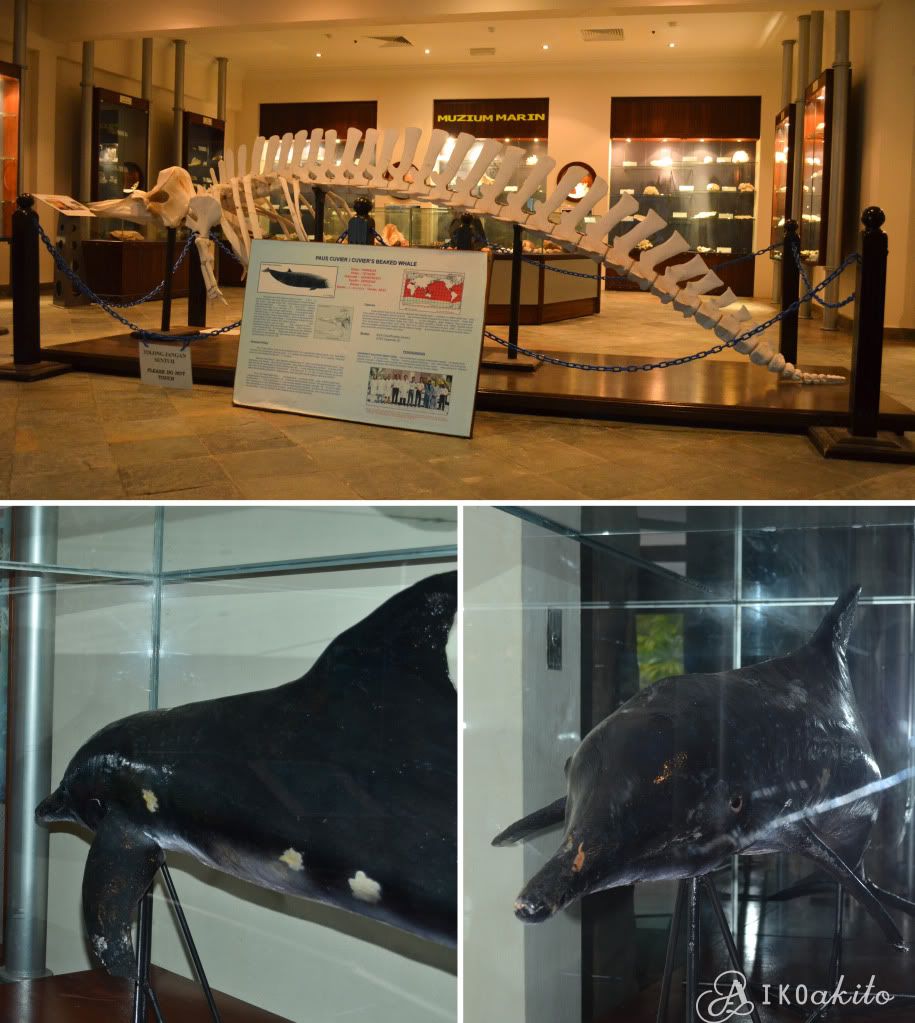
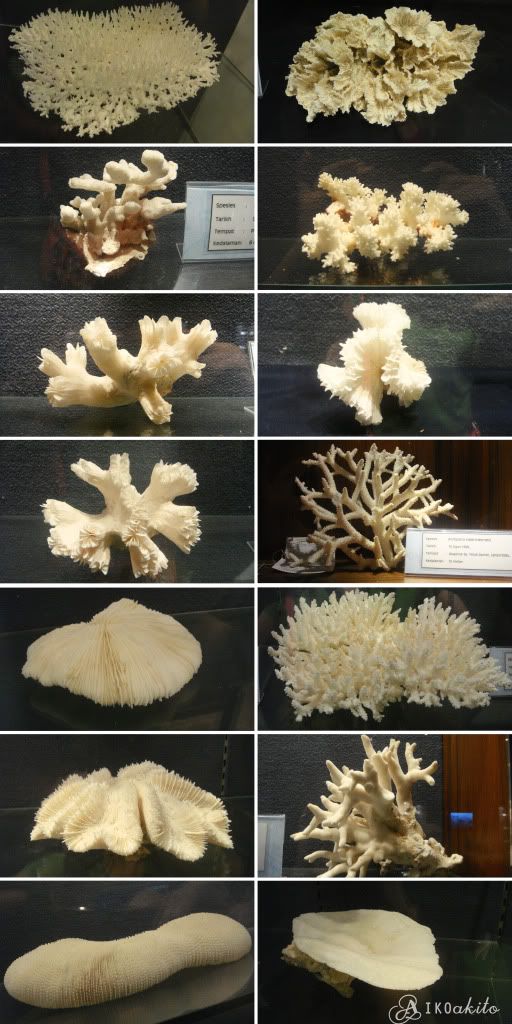



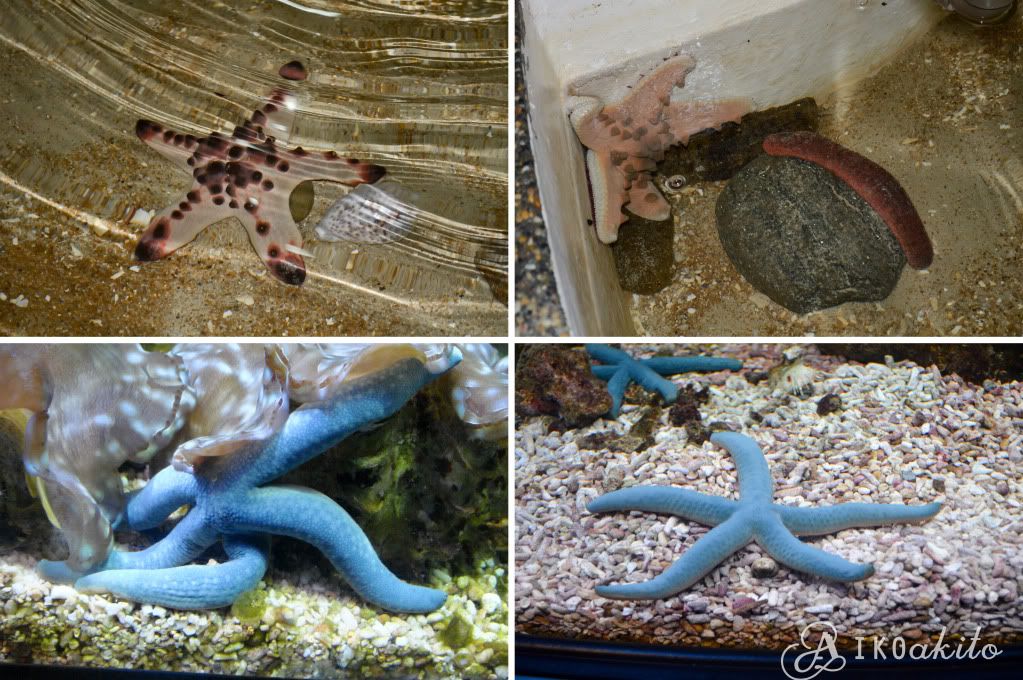
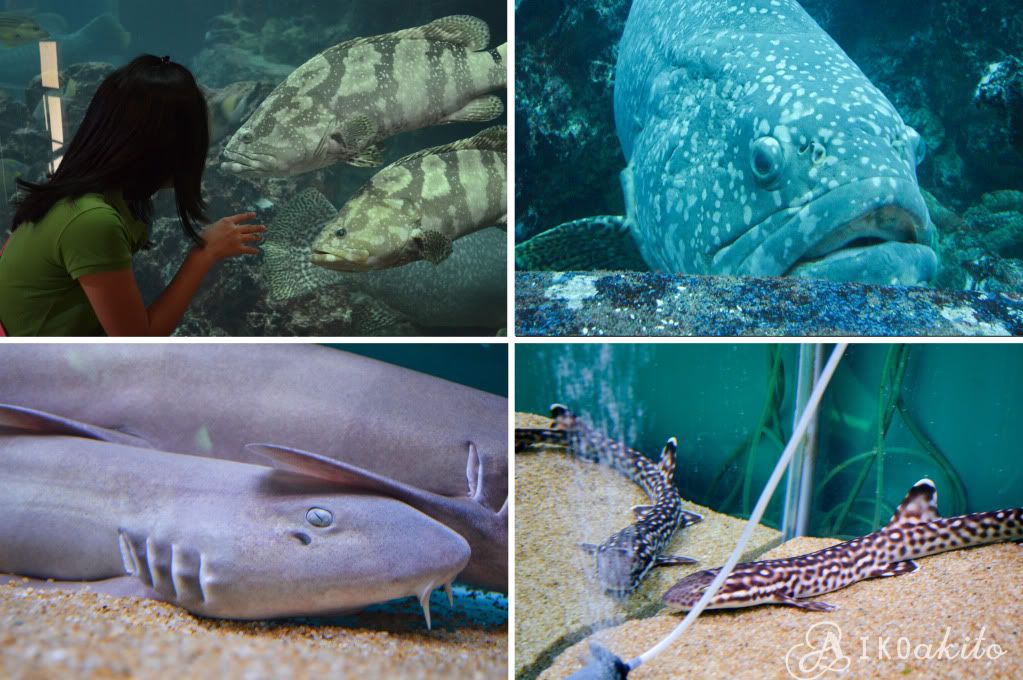
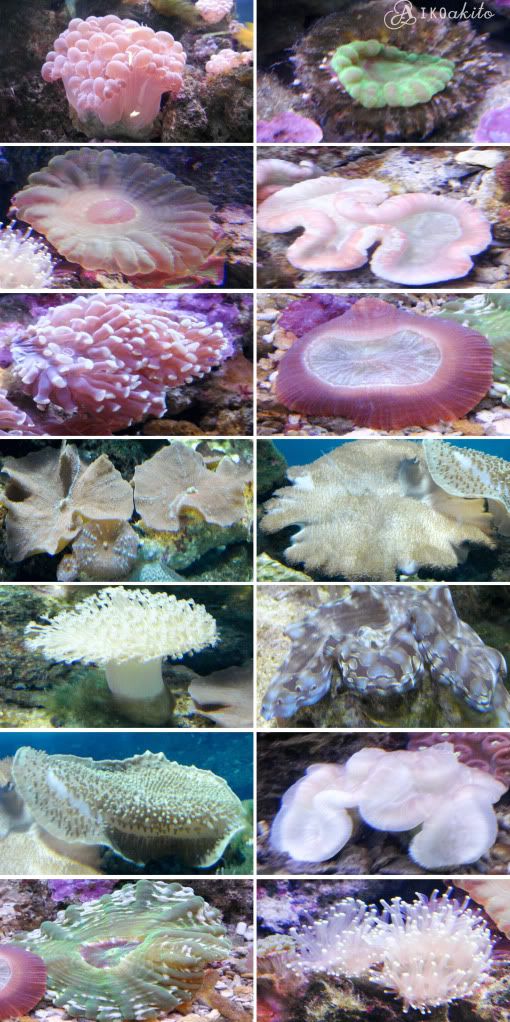




2 comments:
nice ryte ^.^/
Yeah, very nice. Let's go for another round together, someday :)
Post a Comment